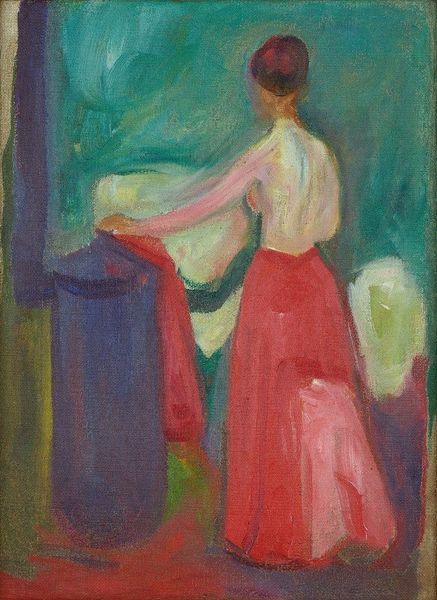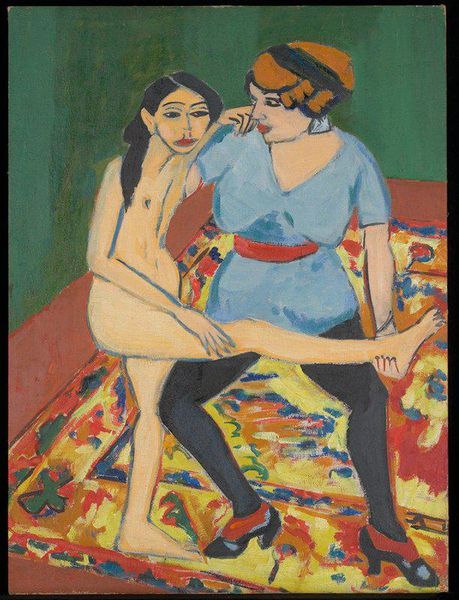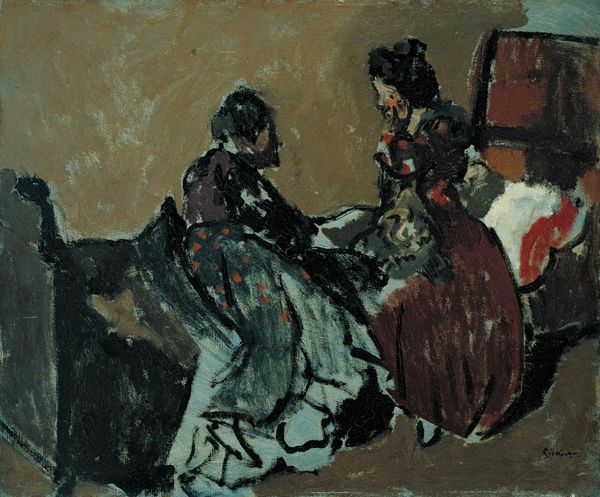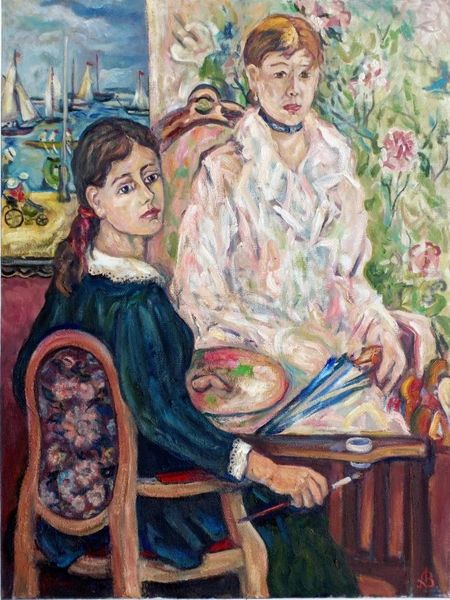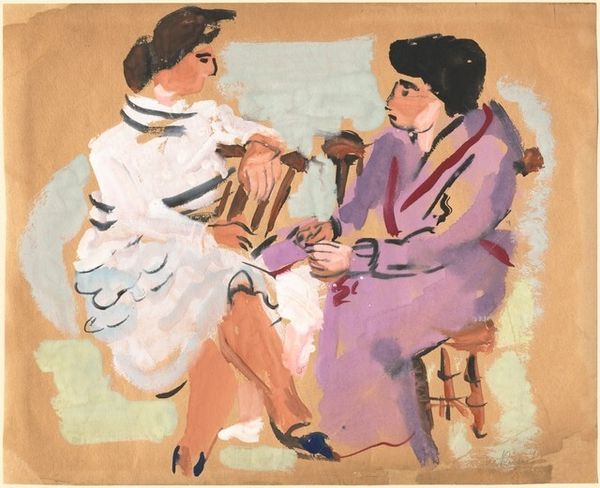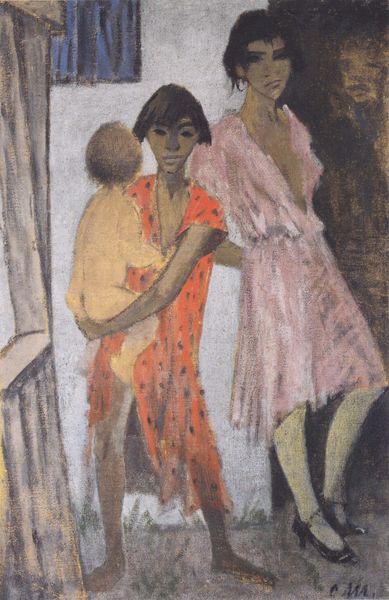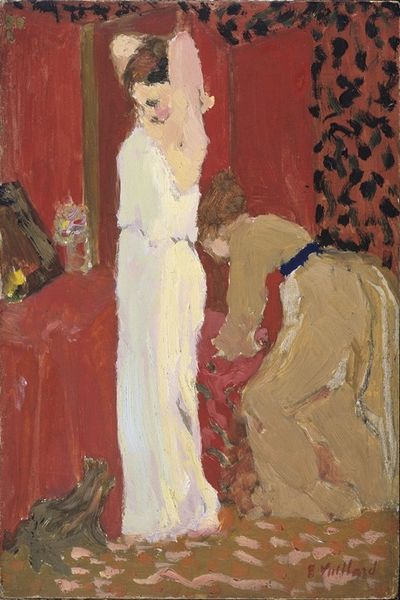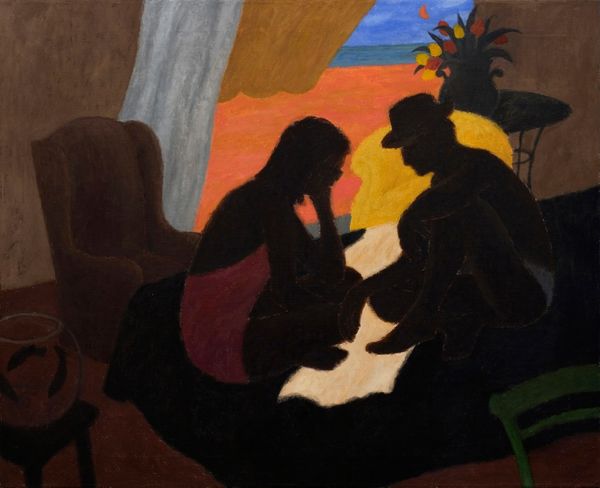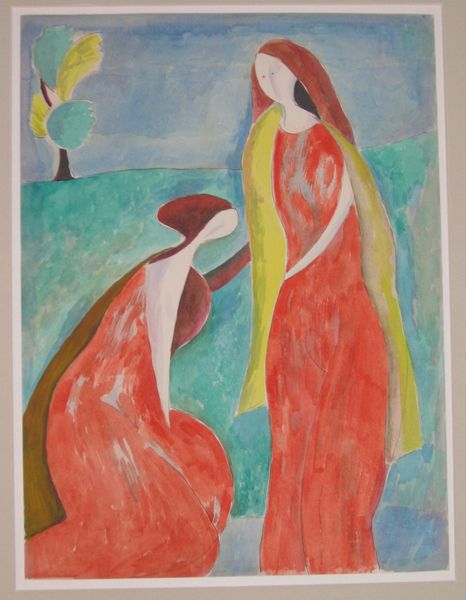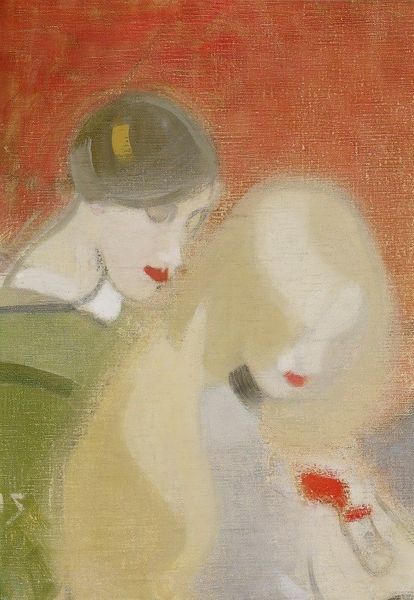
painting, oil-paint
#
portrait
#
figurative
#
painting
#
oil-paint
#
german-expressionism
#
figuration
#
oil painting
#
expressionism
#
cityscape
#
portrait art
Copyright: Public Domain: Artvee
Editor: Ernst Ludwig Kirchner’s 1913 painting, "Two Women by a Sink; The Sisters," is quite striking. Painted with oils, there is an immediate contrast. One sister in lavish pink with furs seems disconnected from the other, who is very occupied at the sink. How do you interpret the emotional dynamic here? Curator: Oh, the drama! Kirchner always invites us into these little theater scenes, doesn't he? To me, the painting vibrates with tension between tradition and modernity, perhaps even envy. The 'sister' at the sink—caught in domesticity's ceaseless churn—is rendered in starker greens, visually tethered to the work, while the other floats in pink splendor, yet seems to find no joy. Do you notice the jagged angles and the almost mask-like faces? Editor: Yes, it’s like their clothes are characters, too. That big white collar against the pink is so severe, as is her hard stare. What statement do you think Kirchner makes with that jarring style? Curator: I think Kirchner is showing us the fragmented self of the modern woman – torn between expectation and aspiration. Perhaps he hints at their roles in a changing Berlin, mirroring his own struggles with art and life amidst the city's throbbing pulse. This tension between internal and external is, in my opinion, quintessential Kirchner. A mirror to his own soul, fractured yet ablaze. Editor: It’s interesting you mention Berlin. Looking again, there’s an underlying disquiet beneath the surface glamour – maybe that comes from knowing the social landscape of the time. Curator: Exactly. I feel it speaks of a yearning… or perhaps, a quiet despair hidden in plain sight. What did you take away from this glimpse? Editor: That even beauty can’t mask the reality of life. I'll remember this dual feeling moving forward.
Comments
No comments
Be the first to comment and join the conversation on the ultimate creative platform.
